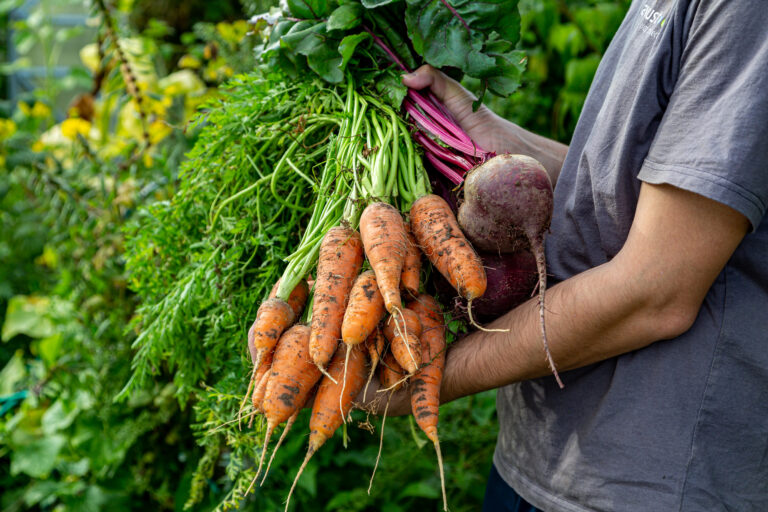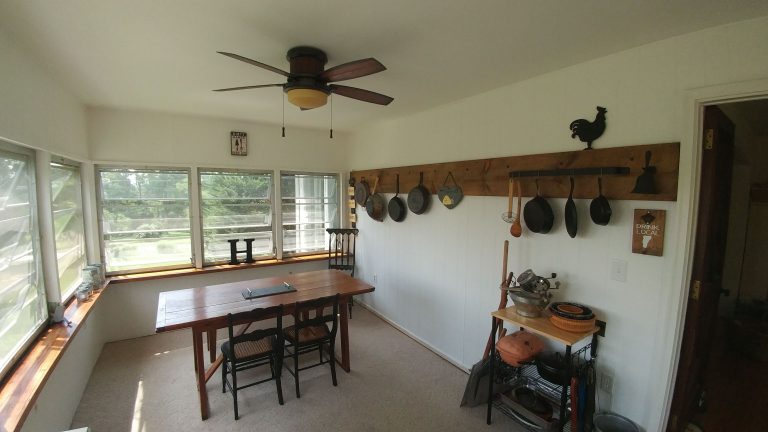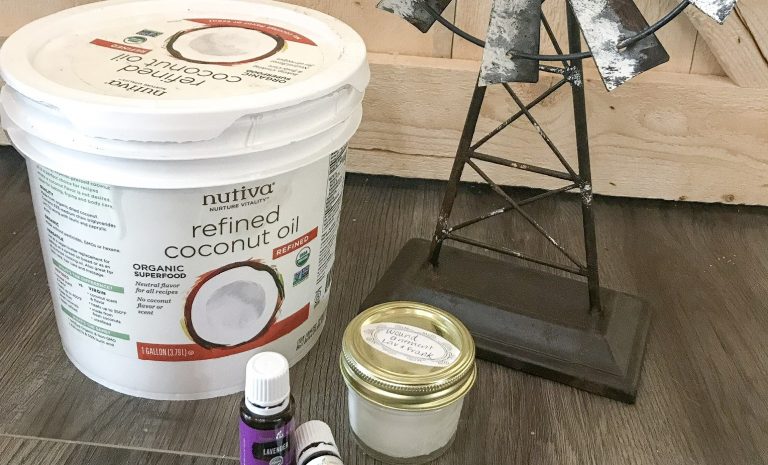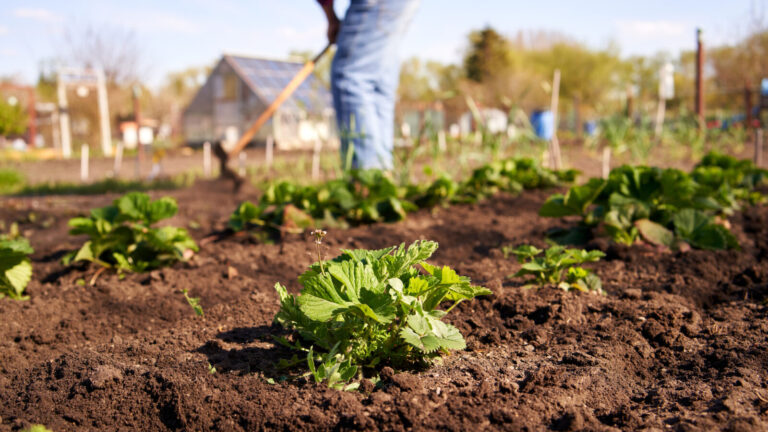This post may contain affiliate links.
Fermenting chicken feed wasn’t something I originally intended on doing. It was only after I had 32 chickens eating the same feed–which turned into us going through a 40-lb bag of feed in 4-5 days–that I considered it. I had seen some members of my Instagram community fermenting their chickens feed and talking about the food savings, which piqued my interest.
Why ferment?
The main reason I was interested in fermenting my chicken’s feed was to stretch that 40-lb bag longer than 4-5 days. The basic concept is to cover grains in water and allow them to soak for a couple days. As I began researching the process, I realized how beneficial fermentation was to the chicken’s health. Two really interesting facts stood out to me supporting fermentation. I did not know that grains and seeds contain barriers to protect them before germination. When ingested, these barriers prevent absorption of all of the nutrients that could be benefiting the consumer. Fermenting allows those barriers to break down and the nutrients to be accessible. You can read all of the fun, technical information about this here. Secondly, fermented feed contains loads more probiotics, vitamins, and good bacteria than regular feed. It is identical to the benefits we receive through fermented foods and yogurts with live cultures. Not only do you save money, but you are actually able to benefit your animals nutritionally.
The process…
I only began fermenting very recently and have created a basic process I use.
Step One
Begin with a clean, food-grade vessel. Since I have 32 chicken mouths to feed, I chose to use a 5-gallon bucket. However, if your flock is smaller, you can get away with using a smaller container. Scrub the container clean before you use it.
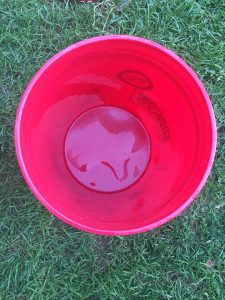
Step Two
Measure out the feed. I picked the brain of several friends who ferment and found that the majority of them use 1/4 cup of feed per bird. Put the feed in the container. This is where you can also add in other things (scratch grains, whole oats, oregano, etc.) I would recommend getting the basic process down before adding in other ingredients.
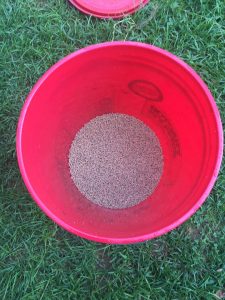
Step Three
Add in unchlorinated water. If your water happens to be chlorinated, fill a container and let it sit for 24 hours–the chlorine will have evaporated by then. The feed needs to be covered by AT LEAST one inch of water. It is important to check it frequently during the first couple hours. As the feed absorbs water, the water level will decrease. Not having the food covered both inhibits the fermentation process and encourages mold and/or bad bacteria to flourish.
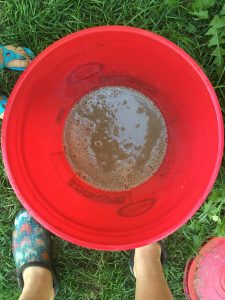
Step Four
The container needs to be covered, but still allowed to breathe. If you are using a small container, a piece of cheesecloth is suitable. For a 5-gallon bucket, I use the lid. I make sure to snap some of it on and leave the rest open so the food can “breathe”. 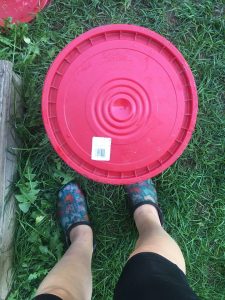
Step Five
Over the course of the next 48 hours, stir the mixture AT LEAST once a day. There should be bubbles when you stir–an indication that fermentation is happening! Monitor the water level and adjust if necessary. The mixture will take on a slightly tangy smell, which is what you want. I think it has a similar smell to some sourdough bread starters I have made in the past.
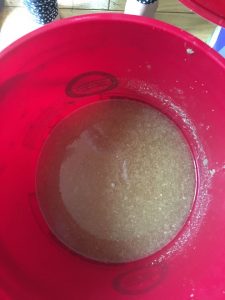
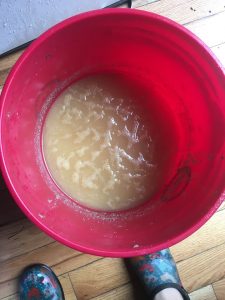
Step Six
The fermented feed is ready to be fed to your chickens after 48 hours of soaking. I have tried a couple different ways of scooping it out–using a ladle, a deep fryer skimmer, a slotted spoon. I finally used my grain scoop and loved it! Be sure to get down to the bottom, as the feed settles after you stir it.
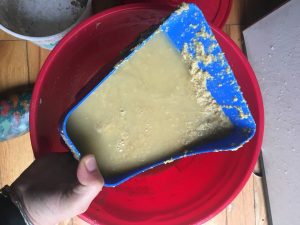
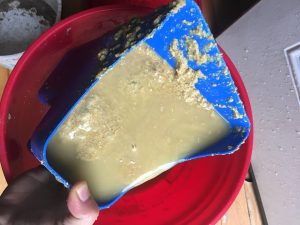
Some of the water will rise to the top. Tilt whatever you choose to use to the side and try to drain off as much as you can. You can reuse the water for the next fermentation.
Step Seven
Your chickens are ready to eat! Decide whether you want to put it in another container to feed or if you just want to plop it on the ground. I tried using feed tubs, but the chickens were scared of them!
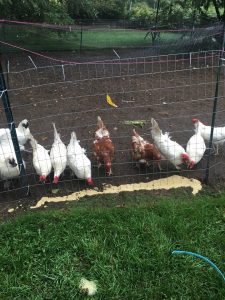
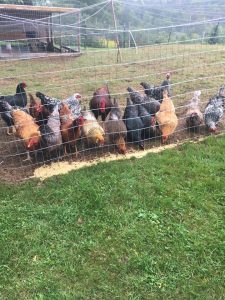
The fence is wide enough to where they can stick their heads through. I push it back a little and make a line of feed on the fence line. I chose not to measure it out for each bird because, well, with 32 birds that’s a lot of measuring and I have zero way of keeping them all separate.
They do have free choice of feed in their feeders in the coops. They definitely have cut back on eating pellets as much! I have two separate coops–one with 12 birds and one with 20. I was filling the larger coop once a day and the smaller one every 2-3 days. Since I’ve been offering fermented feed in the morning and evening, I am filling the larger coop every 2(ish) days and the smaller coop every 4-5 days.
Tips & Tricks
If you live in a warm climate, or if you have a freakishly hot & humid day, put the fermenting feed somewhere cooler! We had a week of 90+ and humid weather and I lost two batches of feed to mold. If it ever looks funny, or smells off, toss it! Better to be safe than sorry with animals.
The remaining water in the container can be reused for the next fermenting. Just top off the mixture with new water to make sure it’s covered an inch. It will still contain some great nutrients that will be added to the new batch!
**Update two weeks after I began fermenting chicken feed: I began mixing a regular scratch mix in with my feed (cut the feed in half and replace with scratch.) I found that the feed is easier to scoop with the addition of the corn and grains. Again, this is a choice TOTALLY up to you!**

